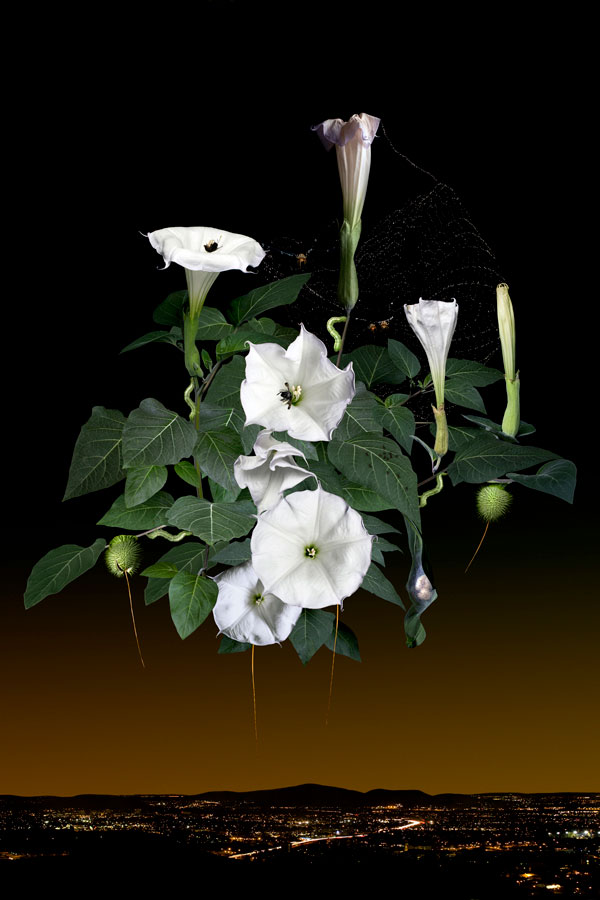Culled from five different series of Naida Osline’s photographic work since 2007, “Florescence” examines an arc of her practice that is focused on taxonomies of flora and fauna. The exhibition title, drawn from her photographic series of the same name, can be taken to refer to the metaphoric blooming of the various real and chimerical botanical specimens that are the subjects of her semi-documentary process—semi in the sense that, even when she is not devising some strange new hybrid species for her botanical portraits, she is never merely documenting.
Her work references the early wunderkammers of Europe, with their collections of flora and fauna, and botanical illustrations; by extension, she alludes to museological practices, and directly, by way of her subjects, to the European age of exploration, Europe’s colonial expansion, and the wunderkammer as an expression of imperial acquisition.
In her 2010 “Tattooed Tobacco” series, which traces the history of tobacco and its commerce between the Americas and Europe, Osline frames the plant’s drying leaves as substance analogous to human lungs or skin—organs both affected by the plant’s use. Pairs of leaves resemble lungs, the veins looking like bronchioles branching into each lobe. The “skin” of each tobacco leaf is literally tattooed, though with temporary ink, thus illustrating social, political and ritual associations with tobacco. Tattooed Tobacco No. 3 reveals an illustration of Columbus, and a depiction of one of his ships; No. 4 references the slave trade; the series becoming a kind of conceptual map to tobacco’s history and uses.
Dreamt up by Osline as recombination of botanical specimens and animal or insect parts—or even manufactured objects, the images of fauna in her 2007 “Florescence” series suggest transmutation of plant, animal, human and synthetic into something novel and sentient. Her visual inventiveness brings to mind the works of Renaissance painter Giuseppe Arcimboldo, the noted court painter to the Hapsburgs whose portraits imagined people as a sum of flora and fauna. In Florescence No. 2, multiple hair-covered eyeballs spill from the mouth of a Bird of Paradise flower; teeth and palette are exposed in No. 9. These chimera offer radical possibilities, or a kind of queering of categories, and are reminiscent of her “Deeper Skin” series (not exhibited here), in which closeup photographs of human subjects reveal strange appendages.
In the “Visionary Plants” and “Poppyhead” series, Osline creates an iconography of plants used for ritual or altered consciousness. Each plant is depicted in larger-than-life scale. Sacred Datura (2010) alludes to the ubiquity of Jimsonweed, the hallucinogen used to achieve visions. In Sex of Drugs (2009), male and female cannabis plants stand side by side. In the “Poppyhead” series, the bulbous pods stand against a foreboding sky.
The categorizing and identifying that Osline does ultimately turn into interpreting and inventing, as she revisits the notion of an archive; as she probes and offers speculative possibilities, she suggests a critique of history and presents new ways of seeing the world and moving into the future.



